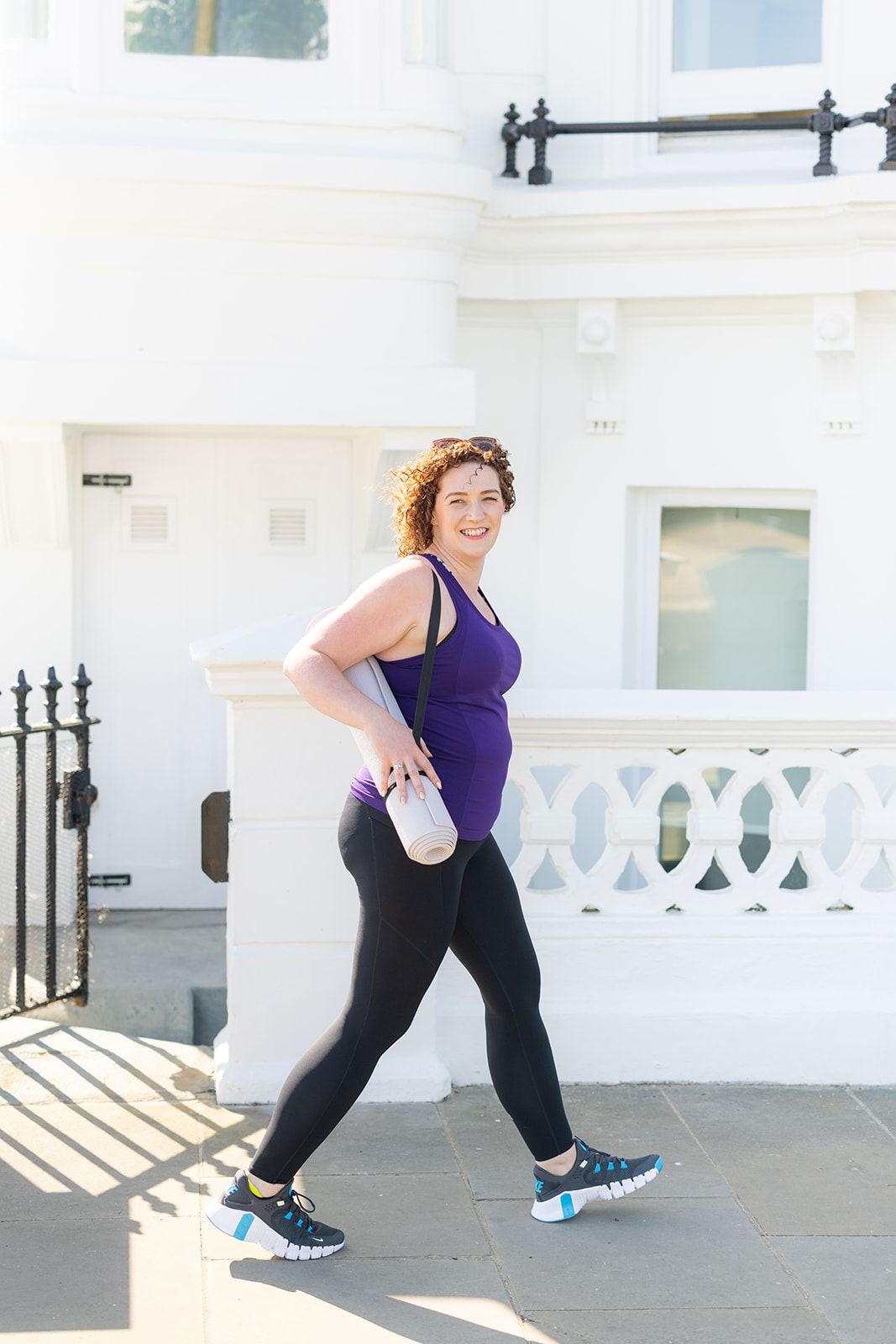Horsham-based female personal trainer, Becky, helps people to get stronger, live their lives well, and enjoy their gym sessions with her. She’s recently been asked to share her thoughts on the trend of adding a walking pad to office setups. Here’s her take…
Our old friend, the step count goal, is on the agenda again today. It’s easily one of the top ten fitness discussion topics, probably because, for a lot of people, it’s an accessible way of increasing activity. The specific variation of this chat that I’ll cover today is something which has become a popular tool within our post-pandemic cultural shift: the walking pad. Let’s dive in…
What is a walking pad?
If you haven’t seen one, these are essentially a smaller version of a treadmill. In fact, the better comparison is a little conveyer belt. Unlike a treadmill, they don’t tend to have a large frame or handles, they’re flimsier bits of kit… but they also take up less space and are therefore easier to store and use in a domestic setting.
And that’s their common usage: they’ve become popular as part of home office setups – those who have a standing desk can put a frameless one under their desk and walk on the spot instead of sitting in a chair. Others may come with a frame, or the ability to position a laptop stand on them, so that the pad itself sort of becomes a desk.
Either way, the idea is that it enables you to multi-task – walk whilst you work. Great idea, right? Well… maybe…
Benefits of a walking pad
We’ll start with the positives. For those whose goal is to walk more, and are also short on time, and possibly a safe space and/or conditions to do so, this could help.
That’s it.
Cons of a walking pad
There are two key drawbacks for me. One is that the solution to all of your fitness problems is more. More movement. More steps. More walking. Is this true? Do you need – or want – to walk more? For some people, the answer will be yes. But it’s not the case for everyone.
The other negative I see is that this is yet another example of toxic productivity. Yes, through one lens, it’s efficient, and allowing you to fit something in without actually making extra space in the day. But first off, see my previous point – is it truly necessary? And, secondly, is it appropriate to be parcelling up and cramming our activity in with our work day, and other commitments?
There are so many comedy shows which mock the kinds of people who do this – get up at 5am and take loud shouty business calls whilst hammering away on their treadmill. Just because this isn’t quite that, doesn’t mean it has a different energy altogether.
There’s a huge amount to be said for compartmentalising our time, and allowing ourselves the grace of dedicated space for exercise, in order to fully appreciate the physiological and emotional benefits we can receive. Yes, there is then a cost, and we can fit in a LOT of steps if we walk for even half of our desk-bound work day. But again, is that necessary?
Should I get a walking pad?
Do you want to walk more, and are you truly struggling for time and a safe environment to do so? If the answer to all parts of that question is “yes”, then I’d consider a walking pad.
I’ll remind you of two more things: firstly, even if your goal is to walk “more” than you currently do, increasing the amount by minutes per day or week is a valid achievement. You do not have to be walking for hours every day in order to increase your activity level. Secondly, walking pads must be purchased. Which means that someone is making money from them. A commercial solution has been found to a problem which very much fits the late stage capitalism type. In the same way that we have replaced pen and paper with tablets and styluses, walking pads have dropped out of the sky in place of going to a gym and using a treadmill, or simply being outside.
You want a walking pad? Get a walking pad.
Want bespoke advice on helping you to do exercise you’ll enjoy? Email me.
